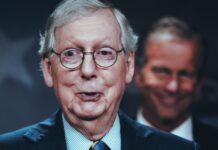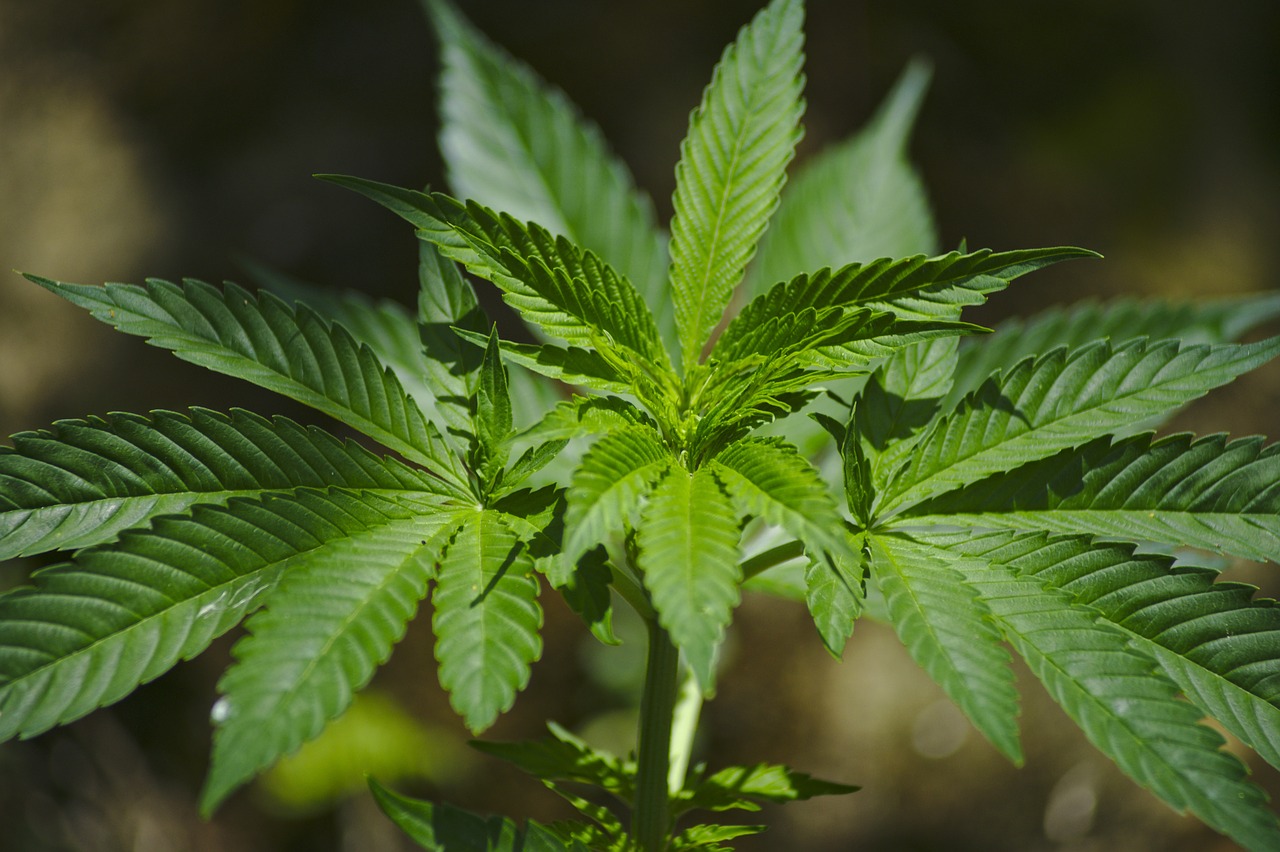
The story so far: Racism lies at the heart of all marijuana prohibition. The man most responsible for making marijuana illegal, former prohibition cop Harry Anslinger, assumed office as America’s first commissioner of narcotics in 1930. At the time, he oversaw a patchwork of state-by-state regulations, a small staff, a minimal budget, and equally minimal mandate. Anslinger’s assigned mission, as he began, was the interdiction of opium and cocaine smuggling. Marijuana regulation played no part in it.
In his book “Cannabis: A History,” author and historian Martin Booth said that as Anslinger got older, he was “frightening in appearance. His square head was out of proportion to his body, he had huge ears and his eyes could be staring. In short, he looked the part of the tough lawmaker and drug buster, this commanding power filtering down through his organization.”
“Frightening” might be a little over the top.
He does appear confident, self-assured and like a man accustomed to having things his way.
Anslinger began his tenure at the Federal Bureau of Narcotics (FBN) as part of a steady upward career path that seemed to begin the day he quit high school and went to work for the Pennsylvania Railroad alongside his father. Anslinger’s biographer, John C. McWilliams, put it in “The Protectors”: “In a short period Anslinger developed a keen understanding of Washington politics and the importance of establishing influential connections.”
In time, McWilliams points out, that combination of political shrewdness and the existing social conditions brought Anslinger victory; he would mold society to his wishes, for decades.
But the process of Anslinger having his way — with the law, with how American culture viewed (and still views) marijuana — was more circuitous than most people realize. The path challenged, but didn’t overwhelm, Anslinger’s abilities as a bureaucrat and as a politician.
But Anslinger’s path — and how he chose to travel it — also revealed something about America as a country and a culture.
In his early years at the bureau’s helm, Anslinger repeatedly steered the FBN away from addressing marijuana.
In “Reefer Madness: A History of Marijuana,” Larry Sloman described a letter Anslinger received on March 14, 1931, from Carl Murphy, the president of the Afro-American, the self-billed “Worlds’ Biggest All Negro Weekly.” If marijuana was in fact “injurious,” Murphy asked the commissioner to provide insight into the drug and the federal government’s potential response.
According to Sloman, Anslinger “replied with a standard letter describing Cannabis indica, detailing its deleterious effects, and noting the ‘grave question’ as to its constitutionality if it were to be placed under the Harrison Act.” The Harrison Narcotics Tax Act of 1915 regulated and taxed the production, importation, and distribution of opiates and coca products, but marijuana was excluded from it.
Even Anslinger knew that making marijuana illegal wouldn’t pass any sort of constitutional muster. McWilliams described a lecture Anslinger gave in December 1932 at Dickinson College in Carlisle, Pennsylvania, where he outlined his concept for the FBN’s policies: “Rather than concentrate on individual peddlers and addicts, Anslinger felt that the federal government should break up international rings of narcotics runners, and stop interstate narcotics traffic rather than clean up the numerous dens that fell under local police jurisdictions.”
At no point did Anslinger refer to marijuana as an “assassin of youth” or “the killer drug,” as he would later call it in other speeches such as the one he gave to the Women’s National Exposition of Arts and Industry in March 1935.
In our last installment, we described how it wasn’t until New Orleans began cracking down on black, marijuana-smoking jazz musicians — who quit The Big Easy and headed north, following the Mississippi — that most of America even had an inkling that marijuana existed.
Marijuana seemed to terrify people in ways morphine and cocaine didn’t. It didn’t motivate them to learn about marijuana but it did seem to motivate them to try and restrict it.
McWilliams described how, in the early 1930s, the National Conference of Commissioners drafted a Uniform Narcotics Drug Act to combat drug problems not dealt with by the Harrison Act. Sloman described how, after going through five drafts, the drug proposals were published with the cannabis section withdrawn. As the Great Depression raged, enthusiasm for regulating drugs was minimal. When the final vote was taken by the commissioners on their legislation, Sloman said, almost half of the Commissioners failed to even show up to vote.
By March 1935, only 10 states had enacted the Uniform Narcotics Act. The states were reluctant for multiple reasons, McWilliams explained: First, the Great Depression burdened everyone profoundly. Their budgets stressed, the states couldn’t possibly afford the enforcement costs. On top of that, the special licensing of doctors and pharmacists threatened endless red tape. And on top of that, those same doctors and pharmacists bristled at giving the courts virtually unlimited power to suspend their licenses and ruin their livelihoods. Finally, outside of the Southwestern states, no one perceived marijuana as a pressing problem needing legislation.
For his part, as late as 1936, Anslinger still regarded marijuana as an intrastate problem, not a federal one. McWilliams quoted testimony Anslinger gave before the House Appropriations Committee that year when asked whether he would recommend that marijuana be included under the Federal Drug Act.
“Not at this time,” Anslinger replied, adding, “until the states become conscious of their own problems, I think it is a mistake for the Federal Government to take on the whole job.”
The truth was, Anslinger’s bureau couldn’t afford to take on the whole job. The same dearth of tax dollars that plagued the nation also plagued the FBN. Like everyone else’s budget, the FBN’s got chopped considerably. This seemed to be the moment, Booth pointed out, where Anslinger — who had previously given marijuana little thought and deferred putting it under federal control, now set about demonizing it.
What happened? What caused Anslinger to suddenly take up a veritable crusade against marijuana? The consensus seems to be: success. Whenever Anslinger talked about marijuana in public, the public responded. That is, the white American public to whom marijuana was strange, frightening and foreign. They responded. And Anslinger noticed.
Around this time, Anslinger began to assemble what became known as his “gore files” — an accumulation of hand-written notes and magazine and newspaper articles that Anslinger used as a combination data file and crowd motivator. The stories in the gore file were lurid, meant to shock, although a story’s veracity was not a deal-breaker to Anslinger. The fact that many of his notes were clearly stated opinions with no basis in fact did not stop him from often stating those opinions as facts anyway.
Nothing in Anslinger’s gore files addresses or even bothers with marijuana’s deleterious effect on a user’s physical health. Anslinger was, by contrast, all over marijuana’s supposed impact on a user’s mental health. Note after note, file after file, newspaper clipping after newspaper clipping, the drumbeat is the same: Brown or black people smoke marijuana and bad things happen to white people.
The trouble is, using racism worked. The more Anslinger went out into the public — not only making speeches, but also writing pamphlets, magazine articles, and newspaper pieces — the more the public came around to his way of thinking about marijuana. And Anslinger’s thinking about marijuana started with racism. Sloman pointed out that by 1935, another 18 states had signed on to the Uniform Narcotics Law.
And still — as Anslinger looked out at the country and considered what he had accomplished, it wasn’t enough for him. Whatever mission Anslinger had started with, it now changed. The historical record points to a clear demarcation point where Anslinger became determined to bring marijuana fully under his control. Being a skilled bureaucrat, he knew that was going to require Congress’ help.
Good thing skilled bureaucrat Anslinger had lots of friends in all the right places.
Next Installment: How Harry Anslinger ‘reinvented’ the truth about marijuana — and sold it to the American Public.















